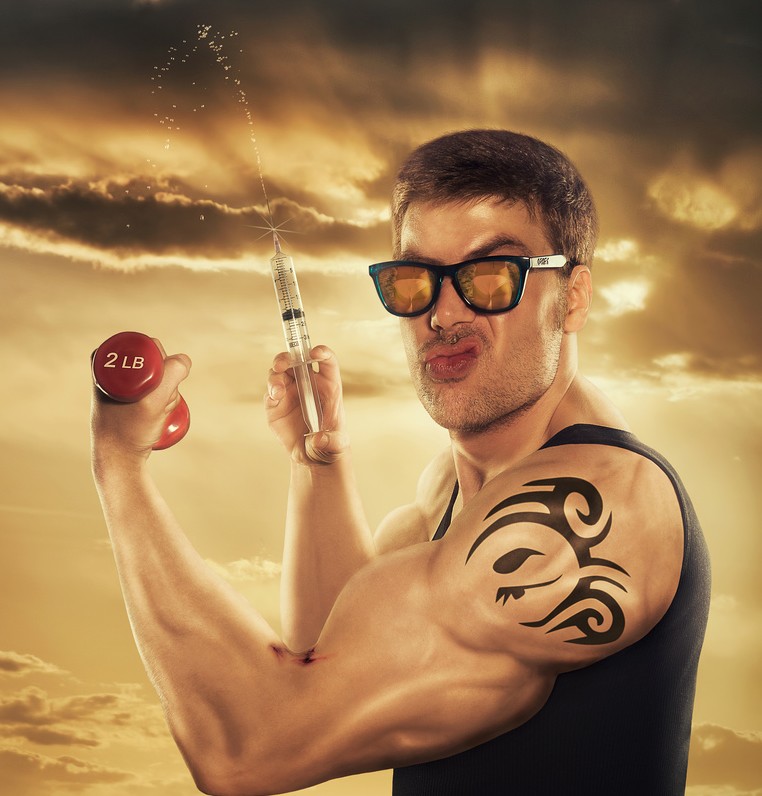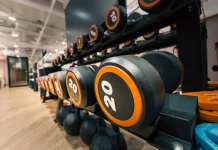Last Updated on January 23, 2024
Let me tell you a story about a former world-ranked boxer. He’s legless now and confined to a wheelchair. He’s living proof of the dangers of steroids. There are others who are not so lucky, because they’re dead. This man once ranked among the world’s top 20 heavyweights. However, he tried to gain an edge – more size and strength – by using anabolic steroids.
He got bigger. He got stronger. But inside he was destroying himself. Before long he had several heart attacks, blood clots, and gangrene in his limbs. By the end of 1987, his legs had been amputated because of the effects of anabolic steroids. Today he’s confined to a wheelchair. How do I know this? That person is me – and I can tell you from experience – steroids are not worth the risk!
Please stay off of steroids, no matter how much you want to win, or hoe much someone tempts you to use them. “Robert Hazelton(Bob Hazelton is a former professional boxer who once fought George Foreman for the Heavyweight Title)

Young people everywhere, men and women alike – many of them athletes or athletic “wannabes” – are using anabolic steroids under the false premise that any potential adverse side effects will happen “to someone else” but not to them. There is an epidemic of steroid use in this country that is quietly being shoved under the rug because parents, coaches, and school administrators refuse to face the fact that steroids are dangerous – and illegal – drugs. But nothing has really changed.
More than 15 years ago Dr. Robert Voy, the former chief medical officer for the U.S. Olympic Committee and former medical review officer for the NFL Players Association, estimated that 10-25% of high school preps were using steroids. “Kids as young as 12 and 13 are taking steroids,” said Voy, one of the leading experts on performance enhancing drug abuse. “And in my experience, many parents of steroid-using young athletes are completely oblivious of what their child is doing.” USA Today reported as far back as December 1990 that steroid use among college football players was as high as 29%. The mean projected rate of use among men was 14.7% and 5.9% for women at that time.
The steroid problem is even worse today but, still, there is no testing of high school athletes, and while California’s Governor Arnold Schwarzenegger – an admitted steroid user in his competitive bodybuilding days – now condemns their use, the fact remains that, if he had not used steroids, Schwarzenegger would probably not have achieved his bodybuilding and movie fame and would likely not be governor today.
Every youngster in America knows it. Schwarzenegger’s belated, after-the-fact condemnation of steroids – and the same can be said of Minnesota’s former governor Jesse “The Body” Ventura – is, perhaps, the worst kind of example of the classic proverb “do as I say, not as I do.”
Professional wrestling (let’s call it what it really is – “wrassling”) has largely built its reputation on oversized caricatures on steroids. Yet, the sport – let’s call it physical entertainment – has experienced more than 65 deaths (“Behind fund façade, professional wrestling sees 65 deaths in 7 years, “Jon Swartz, USA Today, March 12, 2004) largely attributed to the abuse of steroids and human growth hormone (HGH).
According to Keith Pinckard, a medical examiner in Dallas who has followed wrestling fatalities, professional wrasslers are more than 12 times more likely to die of heart disease than other Americans 25-44. Mike “Road Warrior Hawk” Hegstrand, Richard “Ravishing Rick Rude” Rood, Curt Henning, Davey Boy Smith, and “Flyin’” Brian Pillman, are just a few of the recent wrassling casualties attributed in part to steroid abuse. This author knew some of these athletes personally and witnessed their gradual decline.
Of course, we don’t often hear about the effects of steroid abuse among average people who are not famous. So, try these on for size:
• Michael Keys, 17, of Mount Clemens, Michigan, put a gun to his head and pulled the trigger in a classic case of “roid rage.” Key had been using steroids for just a few months, and the chemical imbalance drove him into a suicidal rage within 30 seconds of experiencing the trivial annoyance of not being able to open the door to his car, frozen from the icy out door temperatures that day. (People Magazine)
• Benji Ramirez, 17, of Ashtabula, Ohio, collapsed during football practice of a heart attack after a routine tackling drill. The county coroner concluded that steroids had contributed to his death. Many of his friends and classmates – and even his parents – knew that he was on steroids but said nothing – until after his death. (“The Death of an Athlete,” Rick Telander and Merrell Noden, Sports Illustrated)
• Kirk Vinchattle, 22, of Boone, Iowa, suffered an almost-fatal aneurism and lost more than 2 pints of blood after his blood pressure spiked to 240/140 caused from using steroids for just 12 weeks. “I’d rather play Russian Roulette,” says Vinchattle after several days in intensive care. “It’s safer.”
Former NFL All-Pro Lyle Alzado died of brain cancer at 39 after a long history of steroid and HGH abuse. During his career he suffered from numerous bouts of “roid rage” both on and off the field. At one time his cholesterol count was over 400, and a plastic surgeon twice removed baseball-sized lumps from his buttocks from where he had injected himself over the years. Before he died Alzado is quoted as saying, “Whoever is doing this stuff, if you stay on it too long, or maybe if you get on it at all, you’re going to get something bad from it. It is a wrong thing to do. If you’re on steroids or human growth hormone, stop. I should have.” (“I’m Sick and I’m Scared,” by Lyle Alzado as told to Shelley Smith, Sports Illustrated, July 8, 1991). Somehow that says it all.







